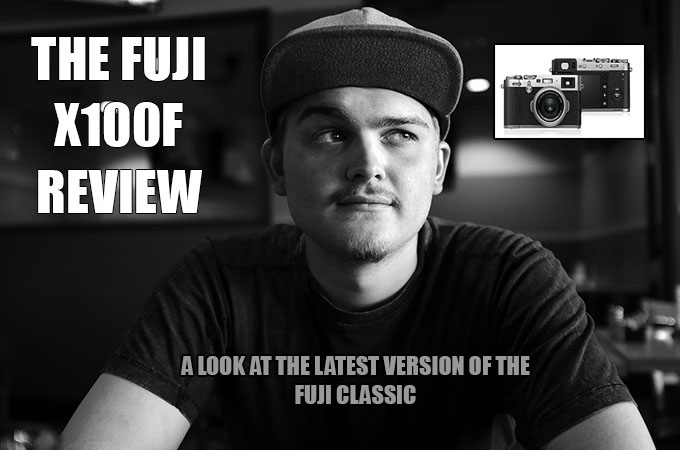
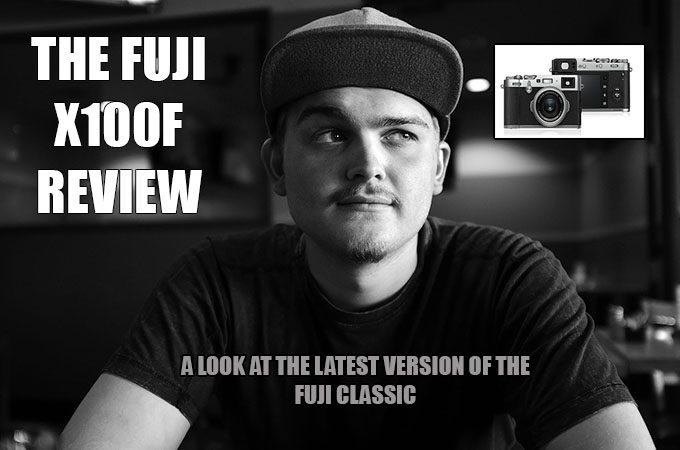
The Fuji X100F Review. The Fourth Generation of the Fuji is “The One”
By Steve Huff
Order the Fuji X100F at B&H Photo or Amazon.
The X100 series from Fuji has long been dear to my heart. In fact, it is one of the cameras that has taken the ride with me on this journey of life for the last six years or so (see this post from a week or so ago), on and off. It has given me memories of these last six years of my life with some great personal moments (most never published) that quite frankly, no other camera has. As I sat and browsed my thousands of photos taken with the X100, X100S, X100T and now even the X100F I kept saying to myself “wow, I have more personal photos that I love taken with this camera than even my Leica M cameras”. Well, maybe not really but it sure seemed that way as my head got lost in a time machine of memories. Seeing my son younger, and remembering the times we used to have taking all day adventures or even seeing memories from other areas of my life that were important to me. Those moments where I seemed to have a X100 body over anything else.
X100F OOC JPEG using the “CHROME” color preset – Click it for larger
–
and this one, 10 seconds later – from RAW
I even did this comparison back in the day, an X100 vs Leica M9 and the X100 did very well, if not portraying the images in a somewhat “flatter” way..but at 1/7th the cost, we have to give a little somewhere, right?
Then I sat there and wondered why that was, why I had an X100 body over a Leica or Sony or whatever I was using at the time, but then it hit me. The X100 was easy to carry, always easy to bring with me, always easy to USE. Sure, the 1st one, that original, had some slow focus issues, and some response issues. It was the 1st, and the 1st of anything is usually never perfect. Hell, even the new F is not perfect but it’s still an X100 through and through and for that I am pleased as punch because the X100 to me represents the ultimate take anywhere camera when you just want to capture your life, and with great quality and color to boot. But I took that X100 with me as it was a joy to use and the output of that 1st version (without the Trans sensor) was beautiful.
X100F with the perfect strap I have found for it. The Tie her Up “Snake” I use the 125mm version as I prefer the strap across my chest.
Now, of course there are other cameras that do this very well. A Leica M is fantastic for this, and has usually always been my “Go To” for these things. Small, slim, tiny lenses and a joy that comes from manual focus and nailing those shots. For me, lately, my eyesight has been degrading (comes with the territory when you hit mid to late 40’s and I am 47 now) so manual focusing a RF has been tricky lately. When I fell in love HARD for the new M10 I realized it was harder for me to shoot as I never wear my glasses when shooting (though I should). I would now need diopters for using an M reliably. Then I remembered that I never missed a shot with the Leica SL due to its huge picture window EVF. Then I realized…”HEY, I never missed focus with the last two X100’s using the AUTO FOCUS”…lol, even better.
X100F, f/2 – Must click to see larger better version
So with my 47 year old eyes fading and me not liking the whole “shooting with glasses” experience just yet I decided to delve into the new X100F with a thought that this time I may keep this camera instead of selling it. I bought it from Amazon when up for order and had one on the day of release. Sometimes I buy a camera for review, then sell it if I do not feel I want it. To be clear, I have a stable of cameras here and being a camera and lens reviewer allows that. I always keep my faves on hand for comparison sake. Today, in March 2017, I keep the Sony A7rII, An Olympus EM1 MKII and PEN-F, A Leica SL, A Sony A6300 and various lenses. These are the bodies that I enjoy and get the most use from right now, and I doubted if there was a place for the X100F but then I realized there most certainly was. I do not own a Fuji right now, and I need one. The Fuji colors, the newer Acros B&W mode that delivers (IMO) beautiful B&W images out of the camera and the small size mixed with the retro design that always made this series beautiful. I have nothing like that in my stable right now besides the PEN-F and while these two have some similarities, they are quite different. So yea, I will add the X100f to my shelf of favorites, and if that was a spoiler, I apologize 🙂
I went with the classic Silver and Black model because to me it just give the X100F that vintage look and style, and I already have the normal black SLR style body filled with my other cameras 😉
IF YOU MISSED IT, MY FIRST LOOK VIDEO OF THE X100F
FIRST THINGS FIRST
So first things first. What does this X100F offer than the X100, X100s and X100T did not? Well, as with all of these Fuji releases most improvements have been incremental and each new model brought forth improvements in auto focus speed and capabilities, response time and in the case of the X100F, the new things or improvements over the last model are listed below:
24.3MP APS-C X-Trans CMOS III Sensor and X-Processor Pro
“Utilizing Fujifilm’s unique, randomized pixel array, the 24.3MP APS-C X-Trans CMOS III sensor affords a high degree of image quality and sharpness due to the omission of an optical low-pass filter. Versus conventional pixel patterns, the X-Trans design more closely mimics the organic nature of film in order to produce nuanced colors and smooth tonal transitions, while also reducing moiré and aliasing. Additionally, the sensor is paired with the X-Processor Pro image processor to yield smooth, low-noise results, an extended sensitivity range of ISO 100-51200, and quick performance speeds throughout the camera system, including an 8 fps continuous shooting rate, Full HD 1080p video recording at up to 60 fps, an AF speed of 0.08 seconds, 0.2 second shooting interval, 0.5 second startup time, and a 0.01 second shutter release lag.”
My Brussels Griffon, Olive. X100F, Acros Mode in full sun in my yard.
Advanced Hybrid Viewfinder
“Both optical and electronic viewing means are incorporated into the unique Advanced Hybrid Viewfinder, which provides both the simplicity of an OVF with the technological advancements of an EVF. Switching between both viewing methods is done with the dedicated OVF/EVF switching lever, enabling quick transitioning between both modes. The OVF has its benefits in providing a clear, unadulterated view of the scene you’re photographing and reduces the shutter lag time to a minimum. For fine-tuning of focus, exposure, white balance, and other camera settings, the EVF gives you the ability to monitor all of the applied settings prior to making the exposure.
An enhanced optical viewfinder now incorporates an electronic rangefinder mode, harking to traditional mechanical rangefinder cameras of which this camera gains its appearance from, and permits refined and comparative manual focusing methods. The magnification of the electronic rangefinder can be adjusted to 2.5x or 6x for improved precision, and real-time parallax correction also enables more accurate framing and focusing in manual focus mode.
In contrast, the high-resolution 2.36m-dot EVF provides you with 100% frame coverage along with the ability to utilize electronic focusing aids for precise manual focus control. By using the phase-detection pixels located on the imaging sensor, Digital Split Image is able to assist in acquiring precise focus by showing comparative in and out of focus areas of the image. Also contributing to manual focus accuracy, focus peaking has been integrated and enables a more objective system of focusing by way of highlighting sharp edges and lines of contrast in a clear manner.
When working with the EVF, you can also utilize Shooting Effect Reflection settings in order to preview and utilize selected camera effects, such as Film Simulation modes. When this setting is turned off, the image will revert to a natural view, void of any exposure or camera settings applied, to better suit working in darker conditions and to greatly reduce any display lag.”
May have been Velvia mode, JPEG – X100F
Body Design
*Rear 3.0″ 1.04m-dot LCD monitor for image playback and review, menu navigation, and for live view shooting.
*A physical ISO dial has been incorporated within the shutter speed dial to allow for intuitive, direct switching of sensitivity settings – This is something cool, and in use I like it. I normally keep my ISO on Auto but here I can easily switch ISO (much like the new Leica M10) and it is very easy to lift up and adjust from Auto, to an actual number or a low or high setting.
*Focus lever has been added to lens to improve manual focus adjustment – A nice touch here.
*Rear focus lever is available for intuitive selecting and switching of AF points – A welcome addition. I love the joysticks on cameras, and use it all the time on my Leica SL. Here it is now on the Fuji X100F.
*The physical exposure compensation dial now features a C position to permit an expanded +/- 5 EV range when working with the control dials – This is also new and nice to have.
*The majority of the camera’s control buttons and dials have been placed on the right-hand side of the body to enable easier one-handed use – In use this works out very well. A nice clean layout and all on the right side. Perfect.
91-Point Autofocus System
“Utilizing both contrast- and phase-detection methods, the hybrid autofocus system employs 91 total points, which can be divided into 325 total areas for a high degree of focusing accuracy in a variety of lighting conditions. Approximately 40% of the frame is covered by 49 phase-detection points in order to provide fast AF performance to suit working with moving subjects.”
Film Simulation Modes
Now with the new B&W simulation “Acros” which delivers stunning out of camera B&W images.
Two with the Acros B&W film simulation. I love this mode and will use it for all of my B&W images. Click them for larger.
More Features of the X100F
*Built-in Wi-Fi lets you wirelessly transfer images or remotely control the camera from a linked mobile device.
*Integrated three-stop neutral density filter benefits working in bright light conditions with wider aperture settings or slower shutter speeds.
*An electronic shutter function affords high shutter speeds up to 1/32,000 sec.
*Auto Macro focusing mode lets you focus on subjects as close a 3.9″ away.
*Digital Teleconverter settings let you simulate the look of a 50mm or 70mm lens.
*Advanced Filters: Toy Camera, Miniature, Pop Color, High Key, Low Key, Dynamic Tone, Soft Focus, and Partial Color (Red, Orange, Yellow, Green, Blue, and Purple).
CLICK FOR LARGER
Shooting with the new X100F vs the old versions…
When the X100F arrived I was excited to use and shoot with the latest version. I was curious as to what Fuji could do to improve upon it from the T or even S. To be honest, I was not a huge fan of the T as I felt it was very similar to the S. Small changes made that really did not affect me at all with it. But this new F, for me is the one that finally surpasses the original for IQ and everything else. To me, this new F is “The One” when it comes to the X100 series. ]
It now uses the same battery as the X-Pro system so we get better battery life, and the body still stays slim and trim. The body to me feels a tad more beefier in weight though, which is a good thing as I always find Fuji camera too feel hollow and almost too light when compared to other cameras makers. Sony, Olympus or Leica. But this X100F feels great, just as it should. Not too light and not too heavy. It’s fantastic in feel and form.
I basically just took mine out with me wherever I went even though these last two weeks have been filled with personal things I had to get done for life in general, as well as some sickness issues and even losing my passport before a huge out of the country trip and stressing to find it (so far without luck). So while I have been stressed and hectic with life, I managed to evaluate the X100F anyway 😉 Truth be told I try not to let myself get stressed out too much, ever, and shooting the X100F seemed to help me forget some of the stress I have been getting thrown at me this week.
Shooting it has been a smooth experience. No lag, no missed Auto Focus shots, no problems with over exposure as I used to get with the older models. Now I seem to be getting a tad but of underexposure which is strange for a Fuji but I usually shoot with a little exposure comp set in to avoid highlights blowing out. Something I became used to with the original Leica monochrome. With the X100F I do not need to do that as it seems to expose the scene perfectly for my worries and the dynamic range is there, as it is with all cameras made today (the good ones).
The EVF is still nice, and how I remember it. Fuji has improved it yet again but in reality, in real use, it is pretty much the same as I remember from the last three. You can shoot full on EVF or use the optical VF that mimics a rangefinder (though not really). So if you like optical, it is here. Like EVF? It’s here as well. I always seem to be drawn to the EVF as I am able to see just what I am getting out of it. If I shoot in Acros mode I can see what the image will look like, and even be exposed like. With the OVF you do not get these luxuries. The EVF is good, but not a “WOW” EVF. For the cost of the camera though ($1299) Fuji has packed in loads of useful features and given us all kinds of goodies. EVF/OVF, the fantastic Fuji Film sim modes, the enhanced AF speed, Better Video (though I still would not use this as a video camera), silent shutter with 1/32,000 speed, they kept the built in ND filter for sunny days when using the mechanical shutter, and an overall package that is just such a joy to use and attractive.
This is a beautiful camera in every way and to be honest, I have fallen for it as it made me remember more than any before it, the good times and memories I made with the original X100 and to some extent the ones that came after it. I have decided that to me, this camera is perfect for making life memories. Even more so than a Leica. It’s cheaper, it’s fast, it’s easy to use yet advanced enough for the geek in us or even a backup for some pros, it has a wonderful sensor as well. Many know I have not been thrilled with the last two Fuji X Trans sensors but this one, I like it. A lot.
No more smudges when using Adobe software, and some of that “flatness” has gone away as well. While not as “deep” as a Leica SL file, what we get for our money here is IMO unmatched in a camera of this type.
X100F, all at f/2 and Acros mode (LOVE this Film Simulation)
The Competition for the X100F?
This camera is a fixed lens 23mm lens camera. This 23mm lens is an f/2 lens and gives us the illusion of being a 35mm lens due to the magnification of the APS-C sensor. This is not a full frame sensor camera and will not give us the huge shallow depth of field we can get from a Sony RX1R system, or even the Leica Q. But those full frame single lens cameras? They run from $3800 to $4300 where this Fuji is $1299. So with the Fuji we get a similar vibe body for $2500 less money and the X100F actually has more features and things going for it in general over the other two BUT, and this is a huge BUT, the RX1R and Q systems will indeed offer better, richer IQ. The Fuji will offer a tad flatter image, and I still do see some of that “flatness” in this latest X Trans sensor but overall, it is closer than ever.
The Sony will be slower in AF than the Fuji, and the Q is fastest of all. The Sony will offer the best IQ of all three IMO, then the Q, then the X100f. All three are FANTASTIC cameras with the Sony being the smallest form factor in some ways, though not as thin as the Fuji due to the HQ 35mm f/2 Zeiss lens attached. The Q is the largest.
To see my reviews of those cameras, check them out here. Sony RX1RMKII, Leica Q and the older Sony RX1R
To be honest I love all three of those but the Q is priced out of my rage for what I would pay for a camera of this kind. The Sony, I love and adore..but it is not the speed demon that the Q is. That leaves me with the X100f. It’s the cheapest, it’s one of the smallest and it offers quite a bit like the unique OVF/EVF experience and the Fuji color and Fuji cilm simulations that can, in the right hands be delicious ; ) I have not exploited this camera for all it can do just yet. But again, this camera can not compete with the Sony for IQ so if IQ is your all out be all end all, I’d say go with an older Sony RX1R (not the MKII) and you can get one for much less than the MKII and it’s output is gorgeous.
The original Sony RX1R…IMO gives a more smoother cinematic vibe due to the full frame sensor.
Other cameras, like IC cameras are not really competition for this camera. If one is pondering an X100F, I doubt they are pondering something like a Leica M or Sony A7 or Olympus PEN because all of those are so different from each other. This camera, you can not ever change the lens. So when you buy one, get ready to set into the 35mm state of mind as 35mm is the equiv focal length you will shoot at with this guy. All the time! No 50, no 75, and now 21. Just 35. So if this is scary to you, you should be looking at an interchangeable lens camera.
The Olympus PEN-F on the left with the AMAZING 25 f/1.2 lens. The X100f on the right.
The closest IC camera to this one is the Olympus PEN-F. It’s look are similar, and the feel is similar and even the PEN-F has a cool Tri X B&W film simulation mode 😉 IN fact, since I have both here, let me compare them a bit, B&W mode to B&W mode 😉 I will use the 25 1.2 lens on the Olympus (closest I have to the 23mm lens on the Fuji). With the APS-C of the Fuji this brings us a 35mm magnification. With the Olympus and the M 4/3 sensor that doubles and gives us a 50mm effective FOV. I do not have one of the 17mm M 4/3 lenses on hand to do a 35vs 35 thing but either way, the Fuji is a 23mm lens, pure and simple. The Only is a 25mm lens. So they are close and this will be a WHAT YOU SEE IS WHAT YOU GET comparison…
SHOT 1, Fuji X100F vs Olympus PEN-F – Acros vs Tri-X
These are OOC JPEGS from each camera using their own B&W film simulations. The Only does Tri-X (though I turned off grain for sake of comparison) and the Fuji does Acros…let’s see if they differ and how..
Immediately I see the Fuji delivers a softer less contrasty look to the conversion. The Only looks a little more “WOW” but that is due to the higher contrast of Tri-X so it is going for that look. Also, the lens on the Old delivers a tad more pop due to the f/1.2 aperture. The Fuji was shot at f/2 and the Only at f/1.2. both wide open to show what you get with each camera and respective lens (23mm on the Fuji and 25mm on the Olympus). The Only has a 2X crop so that 25 will look like a 50 where the Fuji is APS-C. The Fuji’s 23 will appear as a 35mm in regards to FOV. CLICK THE IMAGES for larger.
FUJI
–
OLYMPUS
–
In the 2nd image I see more DR with Fuji out of the box for these JPEG’s as well as a more even tonality to the B&W look. Again, Acros vs TriX but I see that more grey look much like the original Leica Monochrom. This gives us a more unique B&W look IMO, at least for my eyes. I prefer the Fuji here. While the Only is doing the shallow DOF thing better it appears to look a tad more digital. THOUGH I have to say, I like both and would use both. If I wanted a more harder look like TriX can give, I’d choose the Oly. If I wanted softer beautiful portraits I would choose the Fuji. Of course, each can be edited to taste as well. These are right out of the box.
FUJI
–
OLYMPUS
–
How about color? The Olympus has a Slide film emulation and the Fuji has Velvia..let’s see how they look
The Fuji has more glowing color and here the Old is a but more subdued. Again, both wide open and since they are around the same focal length we get more shallow DOF from the f/1.2 of the Olympus over the f/2 of the Fuji. THIS IS NOT A sharpness or detail comparison, just color and to show what we can expect from each combo wide open.
FUJI
–
OLYMPUS
–
and one more…
FUJI
–
OLYMPUS
So to me, I slightly prefer the Fuji renderings for the B&W and for the color, I prefer the Olympus color tones (Velvia vs Slide) in these modes but also look at the OOC DR of the Fuji vs Olympus. Interesting. Of course if these were shot in RAW I could have adjusted the Olympus to be just fine but the SLIDE FILM emulation would have left, so these are all what you see is what you get out of camera JPEGS.
HOW ABOUT VS A FULL FRAME?
Just for fun I pulled out the Leica SL and a 35 Zm f/1.4 Lens to shoot a test image of Debby with each. How would the X100F compare against the big SL which is a $10k combo? Yep, a just for fun $1300 vs $10k combo comparison…heeheehee.
Here the 1st one is from the Leica SL and the 35 f/1.4 Zeiss ZM Lens. A $10k combo, or just under. ($7500 for the SL, $2300 for the lens) – Click for larger to see them correctly!
–
X100F with Standard color
Now while I feel the SL blows the Fuji away here in all areas, I have to say..this Fuji, especially at 1st glance gives us the impression that it is not far behind the SL with Zeiss lens. Yep, the aging 23mm f.2 on the Fuji vs a true 35mm f/1.4 on the Leica yet the Fuji is holding its own. While the SL is in another league in build and feel and control, the X100F has the IQ, and for some that is all that matters. I will say the color is closer from the SL than the Fuji (to reality) but both are lovely. This makes a good argument when spending our hard earned money…do we go for what we WANT or what we NEED?
Now, the SL is a pro camera and can be used in all pro situations. It beats the X100f in all areas and you can use any lens you desire on it, almost. Even Canon and Nikon. It’s a versatile beast and it also has amazing video quality. The X100f is a cheaper made smaller take anywhere camera that can slide in any bag, or be grabbed running out the door. No muss, no fuss. Pick your poison and cost : )
MY BOTTOM LINE CONCLUSION ON THE FUJI X100F
Fuji has delivered yet another X100 camera, the fourth one since 2011. That is a new X100 every year and a half on average. This version is absolutely the best of the X100 models and the reason why is because it is fully matured, it feels better than ever, has a good battery system for its size, has a wonderful EVF/OVF hybrid and has beautiful color from the standard presets or the custom film emulations. It has wide dynamic range and the lens, while aging, offers a bit of classic and modern thrown in. Not bitingly sharp but pleasing and beautiful in its character.
Many wanted Fuji to release this with an f/1.4 lens but that would have made it larger, and most likely slower. It has taken Fuji 6 years to get this lens to be pretty quick in AF as it is, adding a new bigger lens with a wider aperture would probably have been clunky and slow, and for me the X100 series is about having a beautiful take anywhere capable camera with one 35mm equivalent lens on it to you anywhere you need to go, while learning how to “see” as well. A 35mm lens (or equivalent as we have here) will teach you more than using a zoom for a year and when using a camera like this, day in and out, you will learn how to get the most from the focal length and this can result in better images through time and getting comfy with the system.
ISO 6400 at night, one small table lamp to my right. ACROS mode. NR was at -3
The X100F is a camera you can bond with and while never perfect, and not for everyone, for the money there is nothing that beats it. That is important to know..FOR THE MONEY. If you want a fixed lens camera this and the two full frame beasts, the Leica Q and Sony RX1R series are the only game in town. This one is much cheaper and if you can deal with less shallow DOF and an escape from the richness of a full frame sensor then you will be ecstatic to save $2500 or so on the Fuji X100F over the other two. For those who want all out IQ and pop and wow, the Sony and Leica would be your best bet but it will cost you. For me, I am very happy with the X100F and have decided to keep this one on my shelf to add with my other cameras that have stood the test of time in my house. A good way to have a take anywhere no muss or fuss camera companion and a great way to have Fuji color when I want it without having to invest in lenses for another system.
A WIN/WIN.
This is the best Fuji X100 to date, and you can take that to the bank. I recommend setting your noise reduction to -4 though as these cameras (Fuji’s in general) have a tendency to really be aggressive with NR if cranked up.
WHERE TO BUY?
My top recommended dealers are below. You will never get screwed over by them and I have used these shops forever. Class A all the way:
B&H Photo Fuji X100F Info and Order Page
Amazon Fuji X100F info and order page
PopFlash.com Info and Order page
PLEASE! I NEED YOUR HELP TO KEEP THIS WEBSITE RUNNING, IT IS SO EASY AND FREEE for you to HELP OUT!
Hello to all! For the past 8 years I have been running this website and it has grown to beyond my wildest dreams. Some days this very website has a crazy amount of visitors and because of this I need and use superfast dedicated web servers to host the site. Running this site costs quite a bit of cash every single month and on top of that, I work full-time 40-60+ hours a week on it each and every single day of the week (At peak times I receive 100-300 emails a DAY). Because of this, I could use YOUR help to cover my costs for this free information that is provided on a daily basis.
To help out it is simple, and no, I am not asking you for a penny and I NEVER EVER DO! I do this for free basically, and have for years…but I do get paid when you, the reader makes a purchase (of anything) using my links to my sponsors. That is the only way I make the money to keep this free info flowing.
If you ever decide to make a purchase from B&H Photo or Amazon, for ANYTHING, even diapers..you can help me without spending a penny to do so. If you use my links to make your purchase (when you click a link here and it takes you to B&H or Amazon, that is using my links as once there you can buy anything and I will get a teeny small credit) you will in turn be helping this site to keep on going and keep on growing. But each month I need HUNDREDS of you to do this in order for this site to continue, and believe me that is not easy.
Not only do I spend money on fast hosting but I also spend it on cameras to buy to review, lenses to review, bags to review, gas and travel, and a slew of other things. You would be amazed at what it costs me just to maintain this website, in money and time (250 hours a month, and about $3000 per month).
So all I ask is that if you find the free info on this website useful AND you ever need to make a purchase at B&H Photo or Amazon, just use the links below. You can even bookmark the Amazon link (not the B&H) and use it anytime you buy something. It costs you nothing extra but will provide me and this site with a dollar or two to keep on trucking along.
AMAZON LINK (you can bookmark this one)
B&H PHOTO LINK – (not bookmark able) Can also use my search bar on the right side or links within reviews, anytime.
Outside of the USA? Use my worldwide Amazon links HERE!
You can also follow me on Facebook, Twitter, or YouTube. 😉
One other way to help is by donation. If you want to donate to this site, any amount you choose, even $5, you can do so using the paypal link HERE and enter in your donation amount. All donations help to keep this site going and growing!![]() I do not charge any member fees nor do I (nor will I ever) charge for reviews, so your donations go a long way to keeping this site loaded with useful content. If you choose to help out, I thank you from the bottom of my heart.
I do not charge any member fees nor do I (nor will I ever) charge for reviews, so your donations go a long way to keeping this site loaded with useful content. If you choose to help out, I thank you from the bottom of my heart.

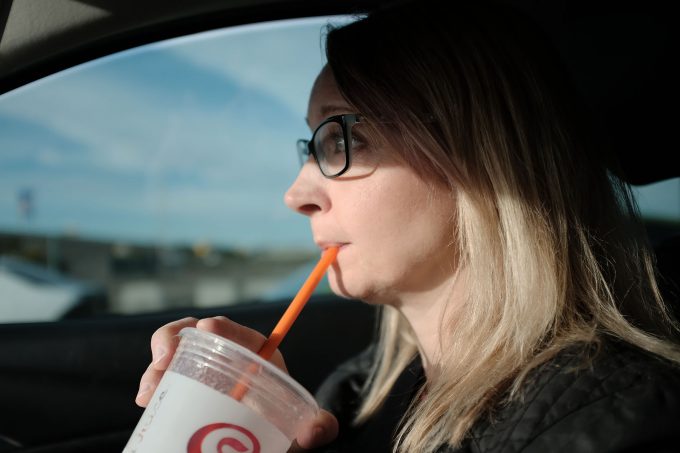
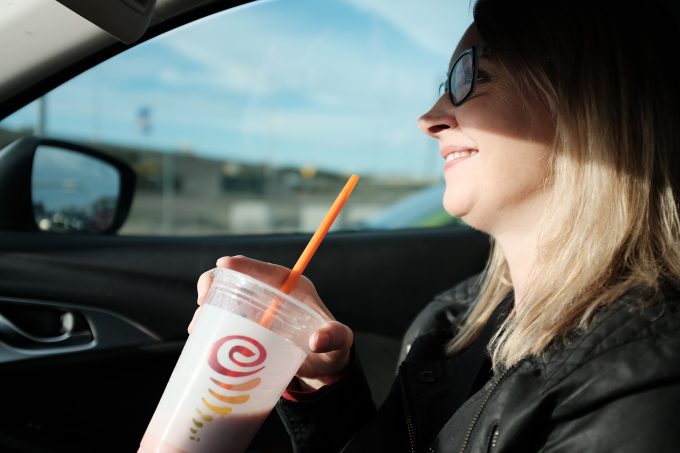
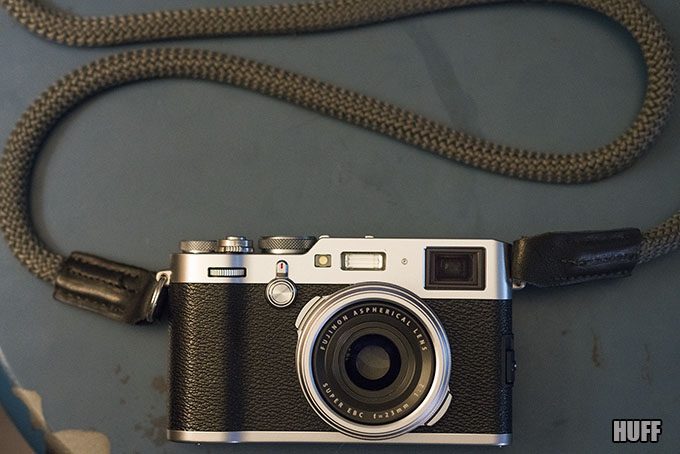
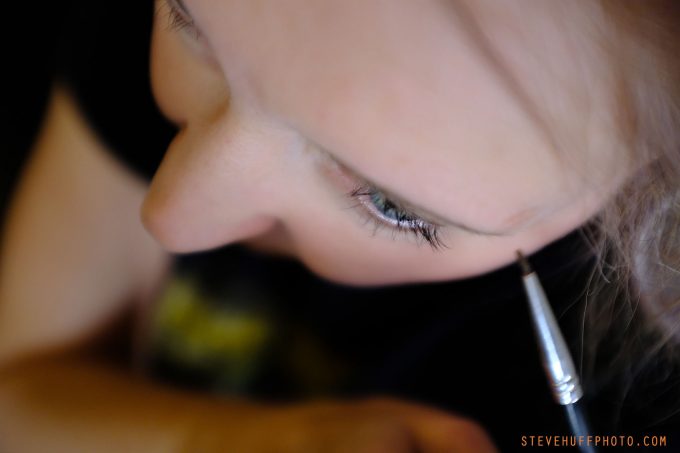
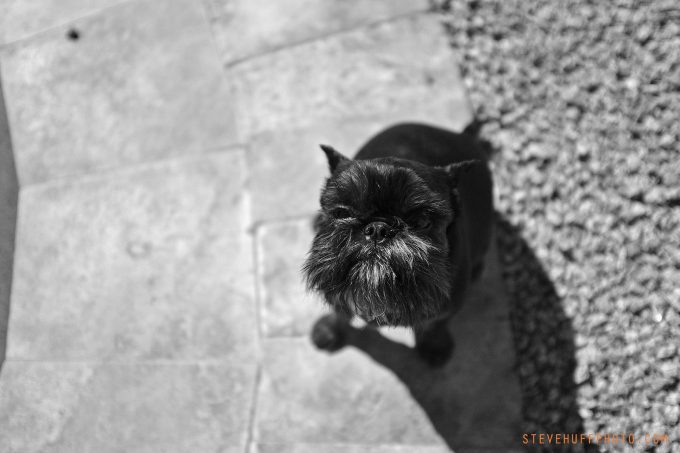
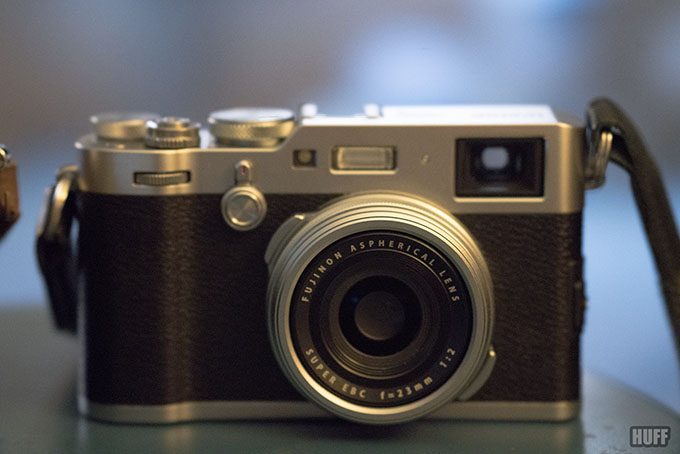
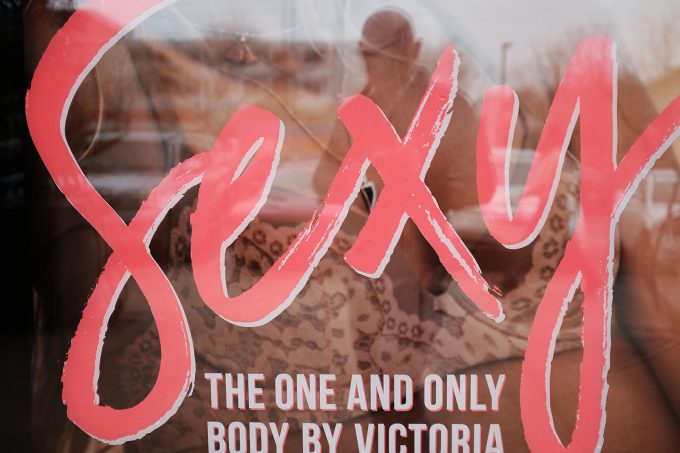
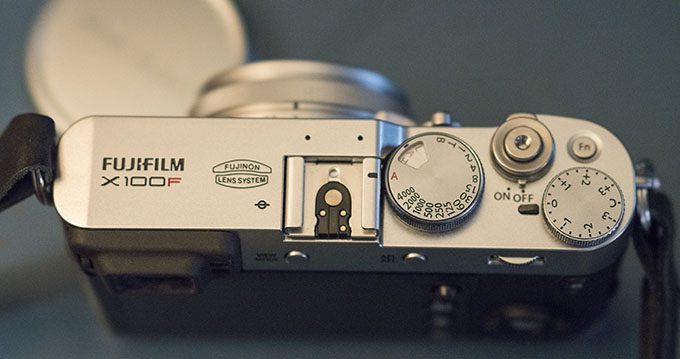

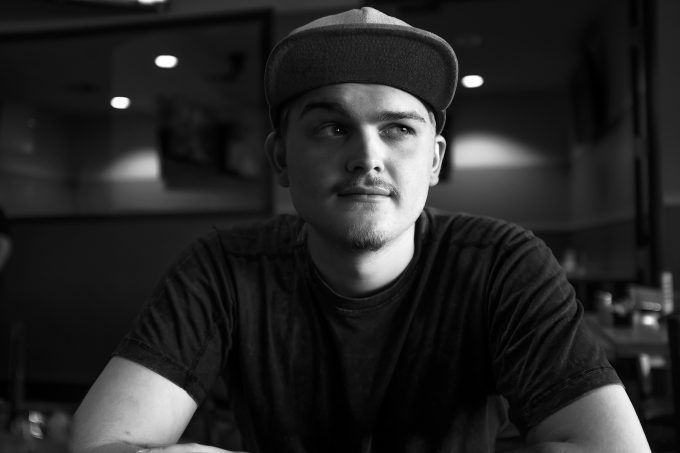

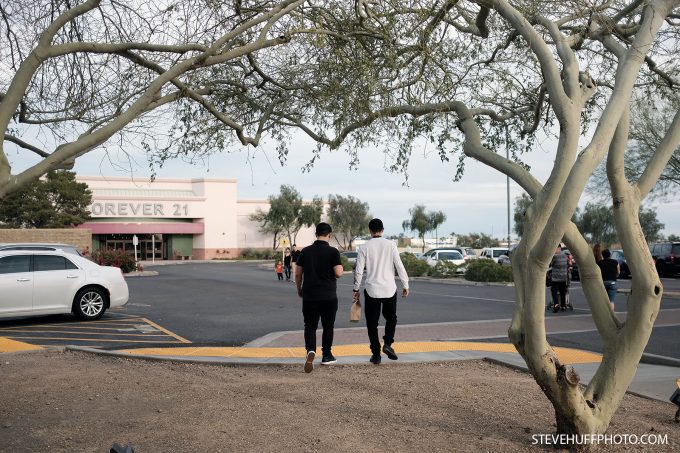
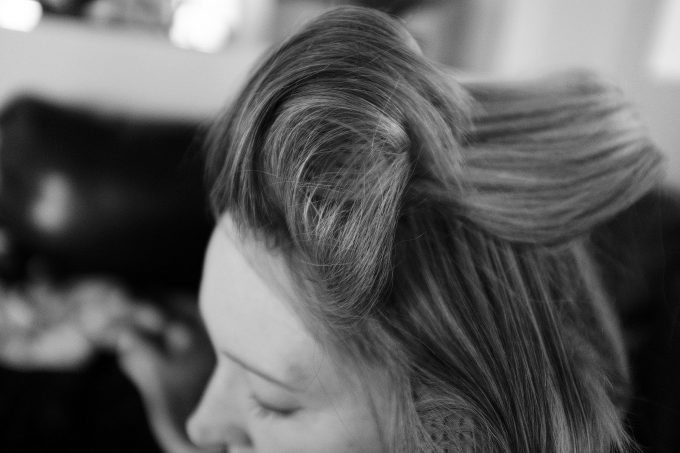
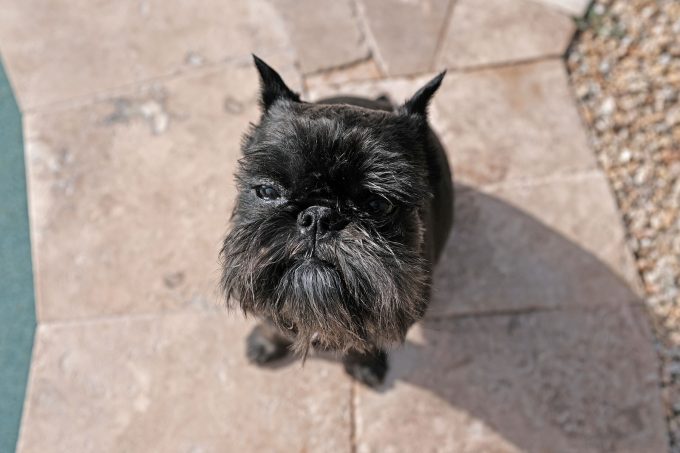
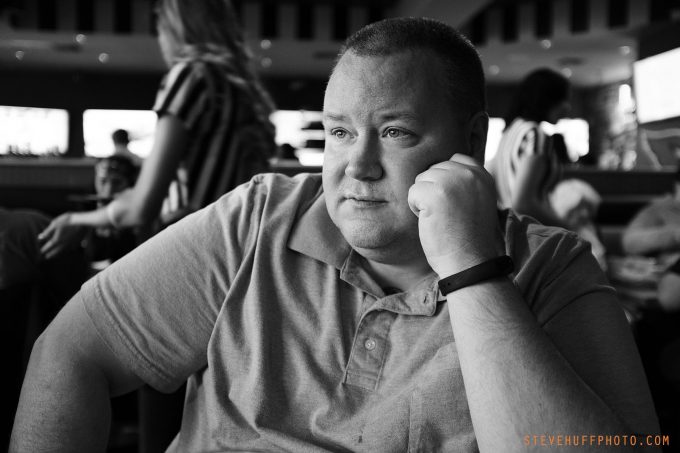

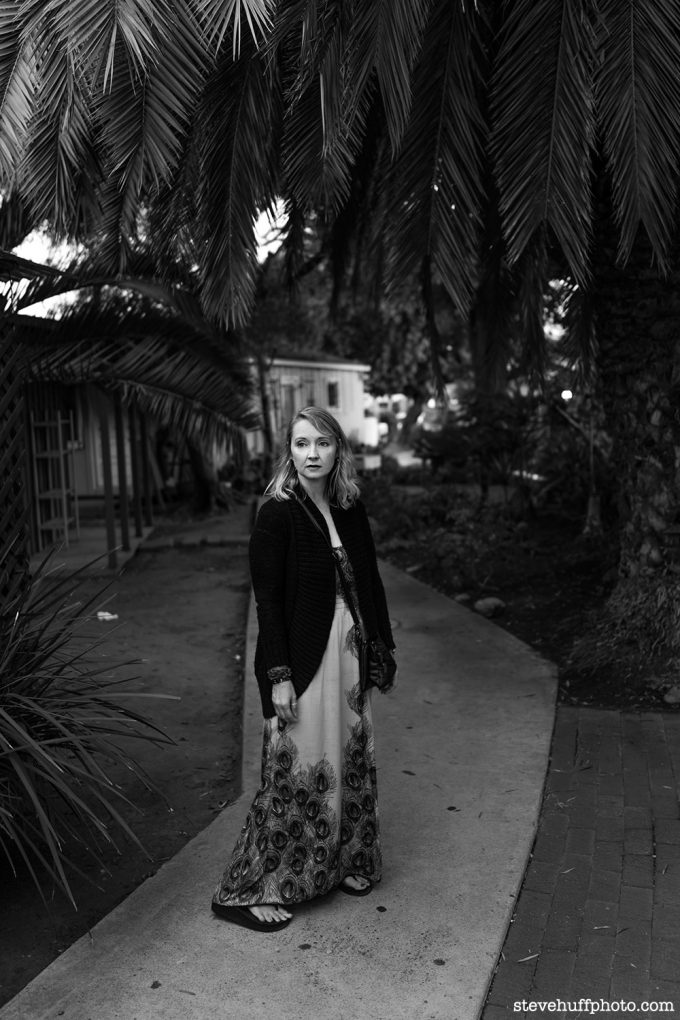
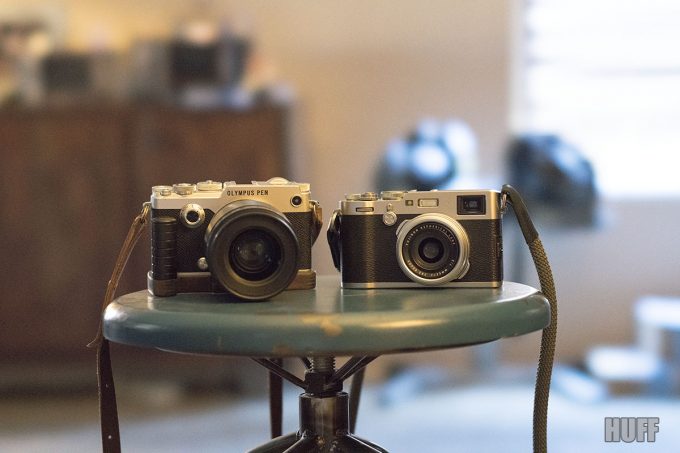
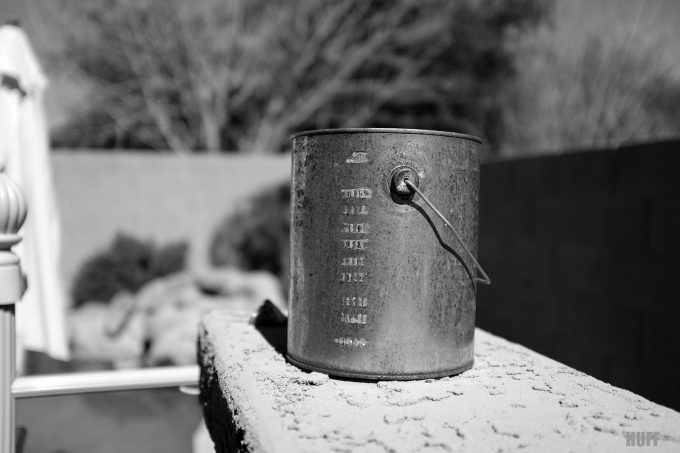
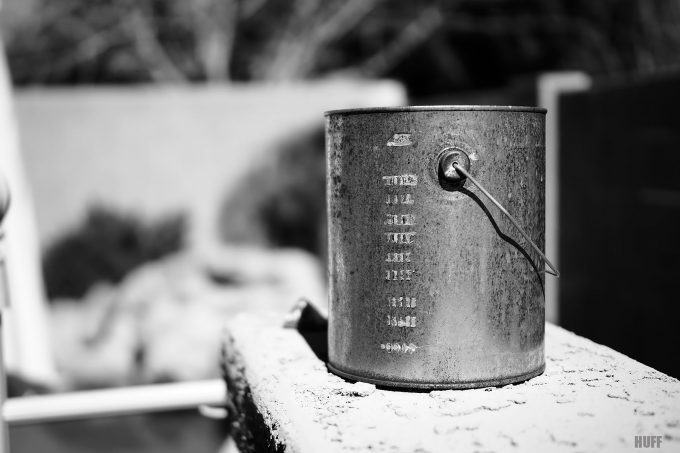
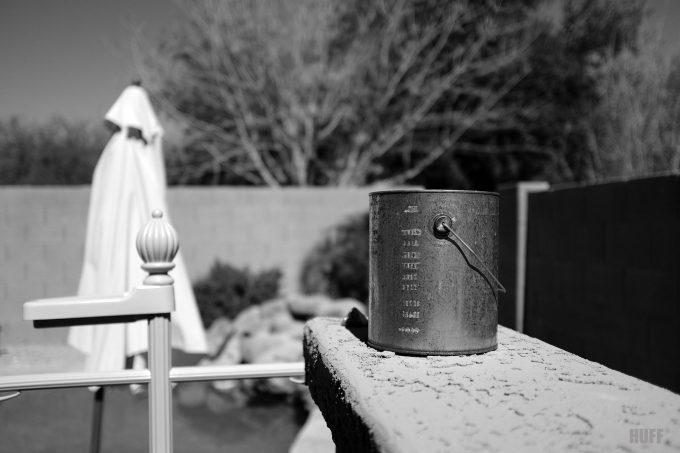
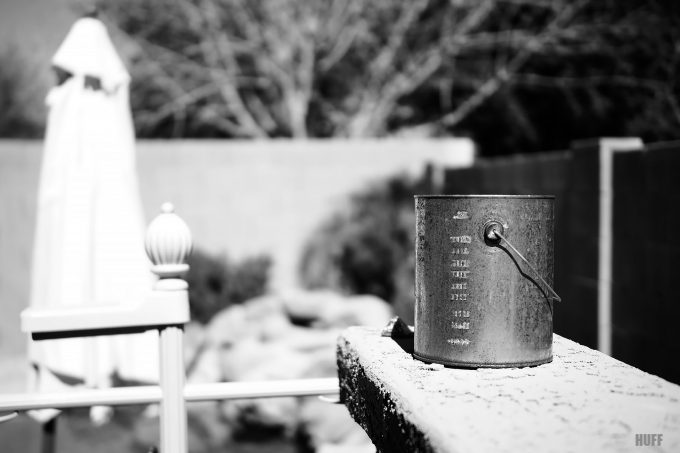
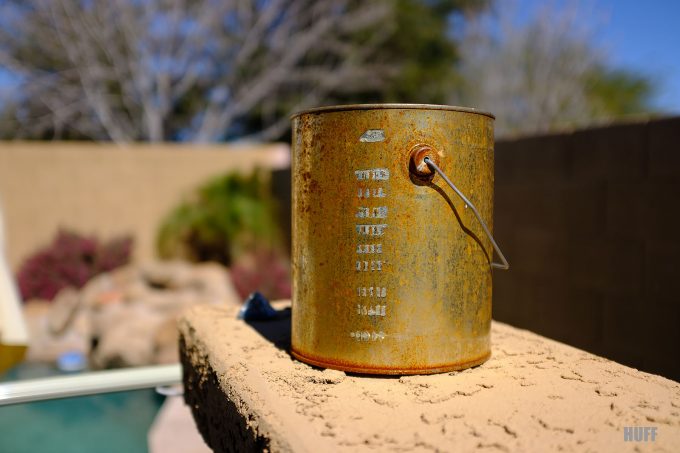
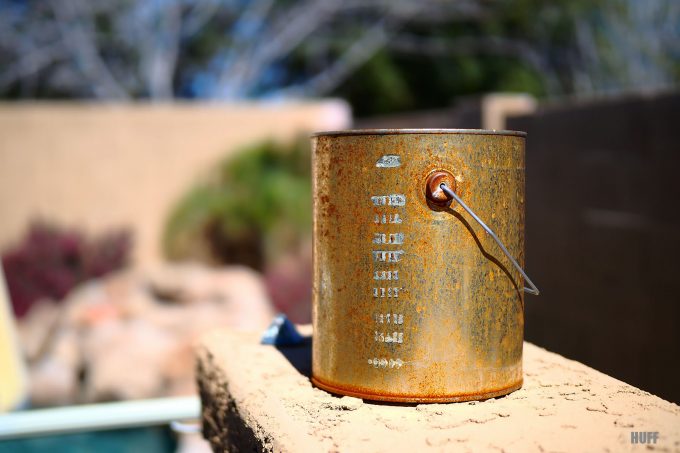
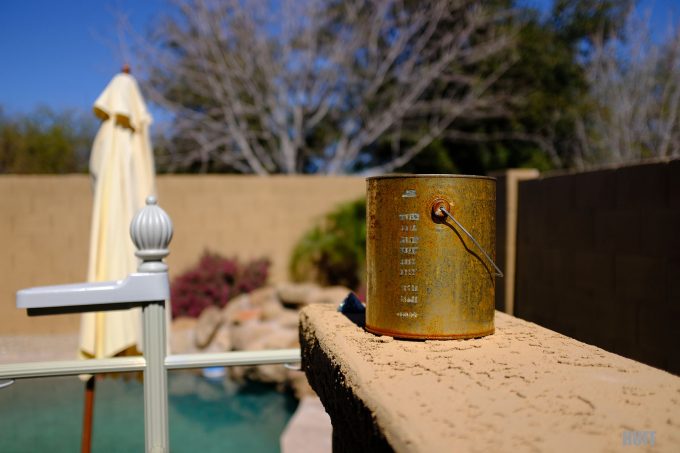
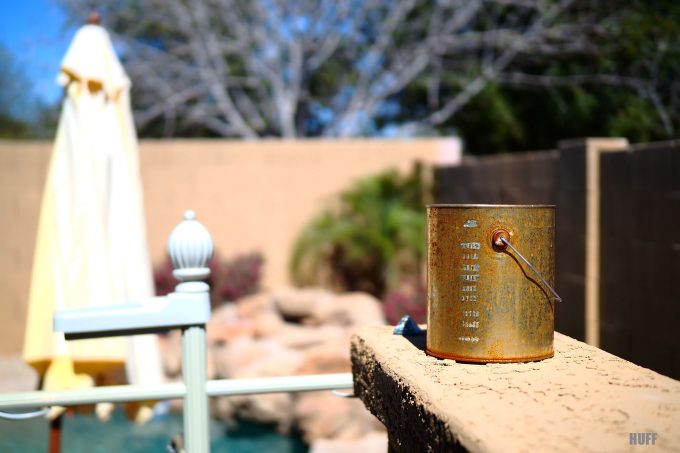


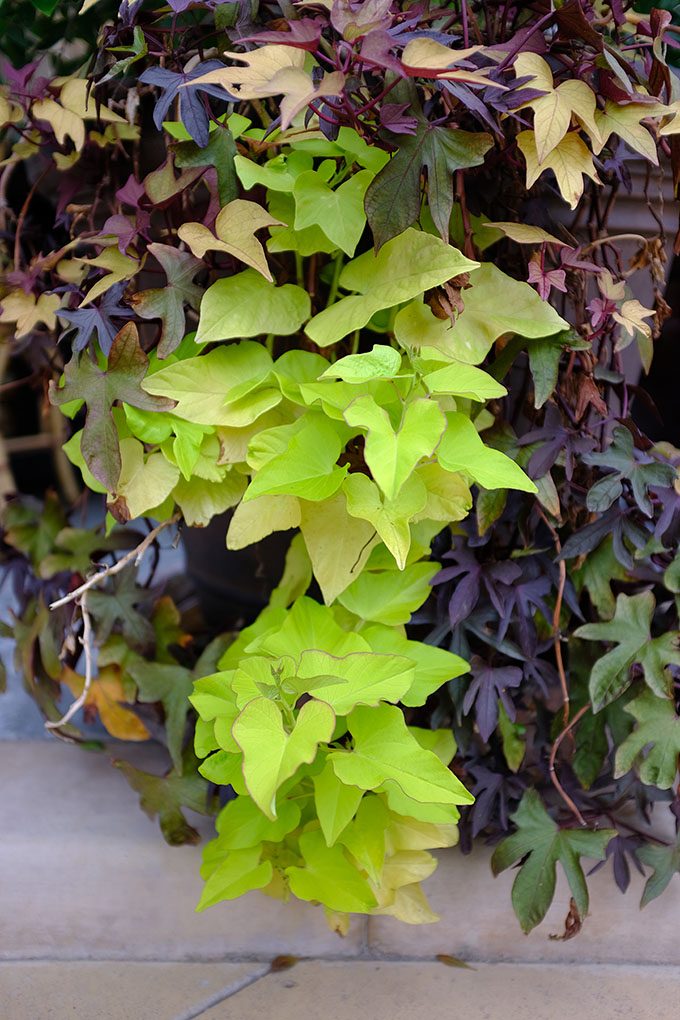
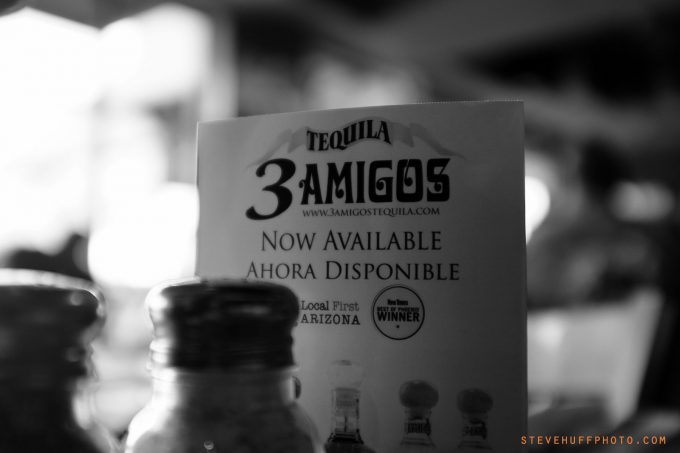
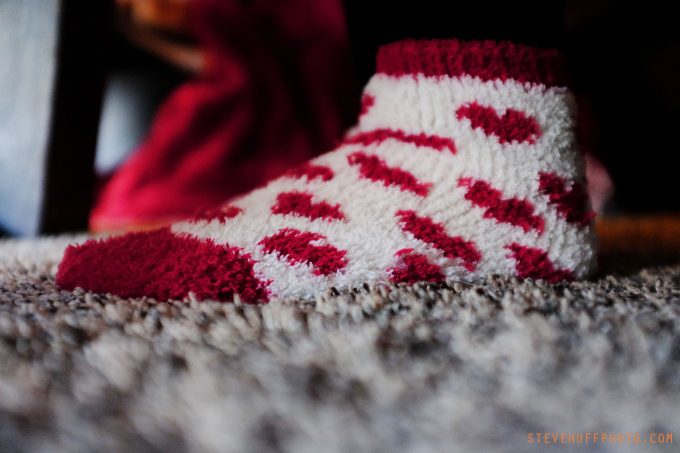
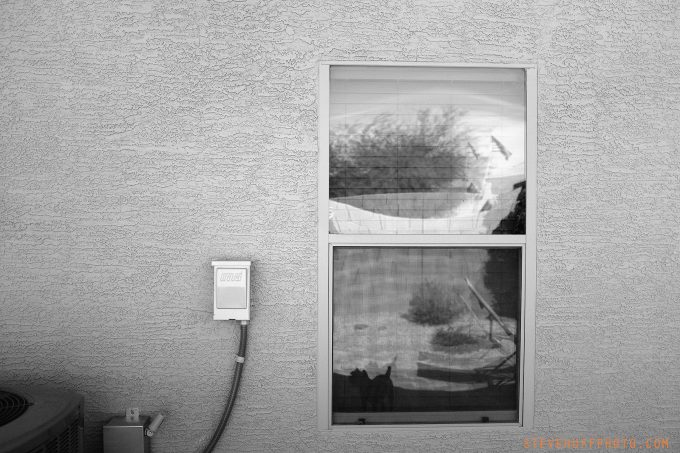
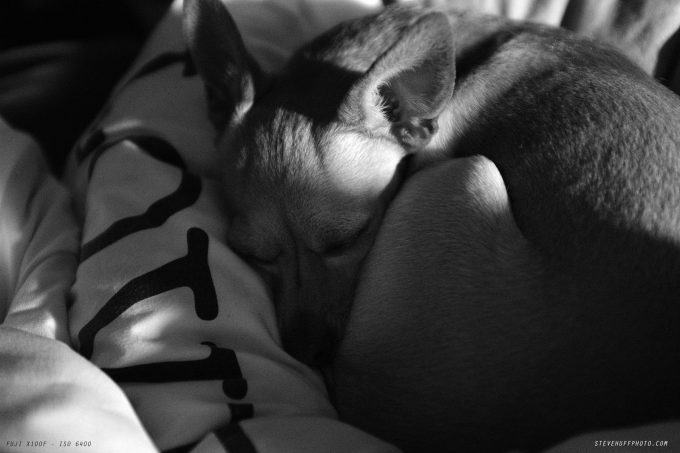

Is this lens really not tack sharp wide open?
I shoot indoors low light all the time and mostly wide open (sometime stopped down a little).
I’ve been using a Lumix GX85 and the 20mm/1.7 (ver2) and it’s brilliant wide open.
But at high iso or if I need to lift shadows or increase exposure in my raw processing it can get noisy and yukky
So I want to jump up in IQ for the above mentioned scenarios – low light high iso. I also need good/fast auto focus.
The 35mm equivalent lens works for me but considering all of the above, is this a better bet than the RX1R II (used). I know the A7R III + lens would be great as per recent review, but….
The RX1RII is far superior in IQ all across the board over an X100 of any year. The X100 lens is the same lens used since V1 and it is softish wide open, especially up close. The Sony lens is far superior, and is even better IMO than a Leica 35 Summicron lens. I prefer the design of the X100/sytyle and looks…but performance will go to the Rx1RII all day long. The Sony does not have FAST AF though. Compared to a GX85 or X100F it’s about 3/4 as fast going by memory. For people, street, it’s all good. For action, or sports, not so much. But the again, neither is the Fuji.
I had to return my X100f, I was having artifacts when shooting at f2, really weird because it’s too softand the eyes are not in focus, this shows up, around 640 ISO..I know I’m hitting focus but viewing at 66% it shows, focusing is bad and in-camera processing is bad, I can barely use f2 so what’s the point of owning when it performs soft at the widest, I can do f1.7 on the Leica Q for landscape, but the x100f you have to stop down at 5.6 or 7.1, DR is too aggressive, has to be set at 100, no way of turning this thing off, Just bit the pill and returned it for a Sony A6500, it’s way better with the files, not saying Fuji is all that bad but the only camera they carry that’s good is the XT-2. x100f is good on the strobes though, you can shoot 1/4000, but still blacks out, needs firmware, quirky Menu system, Custom function is kind of whack, there’s flash settings but there’s no on/off for flash, you have to go back to menu to turn it on, ISO dial is a total failure. I’d wait on the next one if I were to venture into the Fuji system again.
The X100 series has always used the same lens, which has always been soft at f/2. One of the “features” of the camera I guess ; )
Saw a video yesterday on Camerastore and they kind of mentioned that the magic fuji colors thing is not anymore. Whats your opinion about that? Currently using X-T1 and thinking about getting this as a secondary camera so just checking.
Well, I never thought they were magical, ever. Just Fuji colors. They still are Fuji colors. Many cameras do better color. But if you want non realistic colors, Fuji does the trick making things appear more colorful than they are. Depends on your style. For me, the best Fuji color ever was with the old old S5 pro. ; )
its been a few years since I review your site on a daily basis (got married ;-)) and am happy to be back.
Back then you convinced me to buy the e-m5 mk1 and the leica 25/1.4 and its been with me ever sense (love it!).
Got back from Africa couple of weeks ago, armed with 45-150 lens as well and made some really nice photos.
However, it crossed my mind that i need another pocket/small camera with wider apperture for quick pull when required and as a backup.
Funny enough, you just compared the 2 candidates I find most appealing Pen F and x100f.
With the Pen I’m with the same ecosystem of lenses, ita also slightly smaller than the Fuji.
However, Fuji represent different world of tones and color, that might enrich my overall experience. It also provide a challenge of having fixed lense (positive one).
My biggest worry with the Fuji is the time-2-market (pull, open, AF, shot!).
Would be happy ro hear, once again, your thought on it.
use the back button focus (aka zone focusing) to pre focus and snap!
I had the X100T and used it along with my Sony a7. I recently got a Sony a7r II and sold my Fuji X100T mainly because I found the menus and settings so different on the two that I was confusing the settings. I do miss my Fuji, especially with the new improvements on the X100F. I am thinking that I may sell my Sony a7 and put the cash into a new X100T. I have heard that Fuji redesigned its menu to make it easier to use. Did you notice any differences in the menu design?
Hi Steve,
And how would IT be a comparsion between X100f vs Leica m9 in 2017?
Well, X100f could never replicate the M9 look as the M9 is full frame. So you will have much more pop and separation of the subject from the background. Also the X100f lens is not up to par with any modern Leica lens. The X100f would win in high ISO past 320 though ; ) all day long. Also in DR as the M9 DR was not so hot. But at base ISO in good light the M9 would produce much nicer images than the Fuji. After that, the Fuji takes it due to the awful low light abilities (or non abilities) of the M9.
Even with this flaws, especially in low light condition, do still think a Leica M9 + 35mm f2 summicron still worth for general use?
Family, streetphoto and concerts?
Or the overall results of the x100x series would be better?
(i’m a x100x series user till the first model and now considering a upgrade form T to F…or a leica M9)
Well, all up to you. The Fuji color and tone signature is so so so much different. All depends on what YOU like. Both cameras are so different. The X100 is basically a nice APS-C point and shoot with EVF, and the Leica is a fully manual FF rangefinder.
Hey Steve, I bought a Ricoh GR a few years ago based on one of your videos. No regrets – great camera for street and travel. But I’m thinking it might be time for a change. How does the X100F compare – is it a worthwhile upgrade?
Hey, nice Review about this nice Cam. It´s a awsome Image Quality and the Lens have very good Look. Is this a EVF or a OVF?
I had the X-T2 and i need a compact Camera for Trips 🙂
Same VF that has been in every X100 which now there have been four. It is a hybrid EVF/OVF. You can use either. Not the best EVF going by todays standards (Leica SL, Sony A9) but still very very good.
Hi, Steve! Thanks for all of your mirrorless reviews – I have been in the market for mirrorless for several months now. I want something to shoot before Sony announces the a7rIII in a bit (I have been dying). I shoot more landscapes than anything, not many people. I am between the x100f and the PEN-F. Do you recommend one over the other for landscape and low-light? I read through the comments and you mentioned that x100f would handle low-light better. I also like the flip out screen on the Olympus because it makes so many shots for a short person like myself possible.
Beautiful, operational camera. I got waxy skintones though in ooc jpegs when I rented out at all ISOs. I wonder why. I set NR -4, highlight -2, sharpness +2 etc.
Wish they got a non x-trans sensor in this new body.
IME lower the sharpnes to -2 or even lower … choose pro neg std film simulation for portraits (highlight = -1, shadows = -2)
I have had my eyes on these a long time. I appreciate the thoughtful review! Thanks Steve, as always a good read.
Hi. Great review. Any additional thoughts from Steve or anyone regarding the x100F versus the Pen F aside from the obvious interchangeable lenses?
Thanks!!!!!
im looking for a good compact camera. 35mm is ok for me most of the time. i shoot a lot indoors without flash. X100F or Sony a6300/6500? or…(is it true Ricoh has better iq (and can not put an adaptor when needing another focal lenght?))
Hi Steve,
Can I ask, if you had just one camera to choose between the x100 and the pen f with a small lens, for family photos to take everywhere with you without post processing, which one would you chose ?
Thanks for your opinion.
Tough call, but I have a love for the PEN series that goes deep. The Fuji is wonderful. If choosing one..it would be the X100F or the Olympus PEN-F and 25 1.2 or 17 1.8. … Not sure as both have their strengths and weaknesses. The PEN feels better in the hand to me, and is more versatile but the Fuji as in all in one is just about perfect for everyday use and would be better for low light. Not sure really but probably the X100F.
This camera is tempting because if like me…you’re not a Fuji guy….it seems to be a one and done deal. You get all the Fuji sauce in a compact camera. I have mostly M43 but the only camera that is rangefinder-esque is the PEN-F. The only lens that’s really pancake is the 17mm 2.8 which is not very good.
There is the a6000 for a cheap set up with the 20mm 2.8. Now that’s not a bad combination and it’s actually smaller in that it’s not as tall. One stop slower though and no hybrid viewfinder. I mean, you could do an A7 with the 35mm 2.8. Not that’s not a bad idea- about the same price as this set-up but it’s not a rangefinder style, AF is terrible and…well other than that it’s superior in IQ. No Fuji JPEGS though.
I get this camera. There are other alternatives but they don’t quite hit all the same points. Looks like it’s selling well too.
Steve — Which would you choose between a used mint Sony RX1 and the Fuji X100F (same price)? I’m worried that the Fuji will smear details in landscape shots (as has been reported in previous models). Thoughts?
Same price? Well, you must mean a used RX1 original…vs a new X100f. I would. take the X100f because I am not a gan of buying older used digital cameras due to lack of warranty. Also, that original RX1 will have MUCH slower AF. For some it was a deal breaker. All, no EVF on the RX1 (unless you add the external). So while a tough call…I may go with the X100f. The Sony will literally beat the pants off of the X100f in IQ but low light AF is tough, and AF in general is very slow and no built in EVF.
There is just no way that the original A7 with a 35mm f/2.8 lens has superior IQ to the X100F with its 24mp X-Trans III sensor. No way.
And before anyone yells, “Yeah, but the A7 is full frame!”, there’s much more to consider than sensor size. The sensor is only one part of the IQ chain. The A7 sensor is older generation and lacks the copper-wire transfer tech of the X-Trans III sensor, and the processor in the original A7 is nowhere near as powerful as the X-Processor Pro in the X100F (which means SNR firmware and A/D conversion in the X100F are newer and more advanced).
The only way one can compare full frame to APS-C is if both have the same megapixel count and are of the same tech generation. In that case you’ll enjoy about a one stop advantage in DR and high ISO with a full frame camera. The rest of it — including usable shallow DOF, honestly — really comes down to the quality of the lens, camera to subject distance, subject to background distance, light direction and quality…and frankly, operator vision and skill.
That’s the reality.
I hate to burst your bubble but an A7 with 35 2.8 Zeiss will give you better IQ than the X100F. That is reality right there. It will also give you improvements in other areas as well. The copper wire X Trans really means very little in real world shooting. Ive had both, and the X100F is very nice, but typical X100 and gives that look, color and signature with a slightly soft f/2 aperture. The Sony will give you crisp full frame images that pop more due to being sharper. Different looks, different vibe but the X100f will not give better IQ than the Sony combo mentioned here. It will be a nicer camera to carry around, smaller, sleeker, etc but the Sony combo is excellent for IQ.
IMO ‘better IQ’ is in the eye of the beholder. I had the Sony a6000, Sony A7s, Zeiss Loxia f2/50, Sony/Zeiss f2.8/35 & f1.8/55… sold it all and bought the X100F instead. I couldn’t be happier! The X100F make files with character that I love. The softness at f2 is a welcome feature for me. Stop the lens down down a bit and it become tack sharp. The ISO button, hate it? Customize the front wheel instead! But you don’t really have to think of the ISO setting on the X100F as the sensor is ISOless… ISO200 and ISO1600 generates the same amount of noise in the raw files. I use the auto-ISO setting with a roof limit of ISO6400. For Acros I fix the ISO to at least ISO2000 to ensure an adequate amount of ‘analogue noise’ is added to my files made by the excellent in-camera noise algorithm specific for Acros JPGs (http://fujifilm-x.com/fr/x-stories/the-newest-film-simulation-acros/). Acros film simulation can’t be emulated in any RAW converter not even Lightroom nor Photoshop despite the cooperation with Fujifilm. Fujifilm has announced a new raw converter software that will use the brilliant in-camera RAW-converter… xmas present this year, yeah!
The in-camera Acros film simulation was reason enough for me to switch from Sony to Fuji. And the overall experience with the X100F is for me closer to the good old days with 35 mm film.
I like the ACROS mode. At the same time, it looks the the B&W output from the Nikon V1, which I also like. Of course, the Nikon V1 is a 2011 camera.
I still go back to the V1 with the 18mm f/1.8 and the rich B&W settings. The AF speed still is awesome and it still is the camera for me.
I tried the X100 line with the TCL teleconverter, but the camera will be awkward to handle. The TCL-X100 just adds up to a too enormous camera and unfortunately I love the 50mm FOV too much…
That V1 is an awesome little camera!
It’s not about bursting bubbles…or living in them. It’s about daily professional use. When you’ve shot several of these machines under the most challenging lighting conditions — as I do every day — you learn very quickly the “reality” of things. And in reality, lenses aside, the X-Trans III sensor edges out the original A7 sensor for overall IQ. Admittedly, some of this comes down to much better signal processing in the Fuji, but that’s half of a digital image anyway.
Your reality is a tad skewed and biased. The reality is, you are incorrect. But you have your opinion, I have mine. ; )
I agree with Trey about the Ricoh GR. I have a GR and X100T. The Ricoh is very solidly built, with perfect ergonomics and the lens is incredible when stopped down a little. Despite the slightly older sensor design it still produces lovely results, especially the black and white jpegs. I don’t find the lack of a viewfinder a problem most of the time.
I appreciate Steve’s opinions and understand where he’s coming from, but I think if you are in the market for a camera like this and enjoy the 28mm fov, then you really should consider a GR, especially if cost is a factor.
Steve, do you know, if Fuji improved the lens design or do they use the same lens from the X100 physically unchanged. This lens has been designed 2011, 6 years ago. (https://www.dpreview.com/reviews/fujifilmx100/15)
Same lens from the original. No tweak, no changes. I use lenses that were designed 40 years ago so it does not bother me that it is a 6 year old lens. It has character and if they changed it, the entire X100 mojo would change as well.
Steve, do you know, if Fuji improved the lens design or do they use the same lens from the X100 physically unchanged. This lens has been designed 2011.
Review of the lens, 6 years ago: https://www.dpreview.com/reviews/fujifilmx100/15.
I have an X100S and love it. It’s lightweight, very portable, and delivers a big bang for the buck in every way. I think it’s perfect for general family occasions, vacations, and street…a real camera to take with you. Can’t wait to get the X100F.
Wow, Steve- great review, very balanced and honest- much appreciated.
Now, add the red filter to that Acros setting, and tell Debbie to cover the house with plastic, because your head’s gonna explode from the awesomeness!!!
Lol, will give it a go ; )
Hi Steve, Wonder if the digital zoom is any good? Do you have sample shots. Mahalo, Wes
As always, well done- as it turns out the x100(original) is my one & only digital in addition to M6/M5. Ive been waiting for this, now that its here I am hesitant, if the Leica Q was a 35mm I’d go that way. What is your opinion Steve 100f versus OlyPen? I do 95% street/inside tight rooms like restaurants, documenting people shadows and similar, intrusive lens get in my way, like AF and manual when I can…. Thanks
I’d go for the X100f but the PEN-F and a 17 is also quite nice. But I like the charm and simplicity of the X100f. If you feel you would want a 50 or 75 or different FL, the PEN-F would be the way to go for sure.
THANKS!! Steve… much appreciated-as always!
No love for the Ricoh gr? It’s a fixed lens aps sensor with killer manual controls for about half the x100f price….unbelievable raw file flexibility, and snap focus mode really is the “worlds fastest AF” if you know what you’re doing.
This party isn’t just for Fuji/Sony/Leica.
I agree. Always amazed to see GR “forgotten” in most comparisons. For my use, it is the best of the bunch and by far the cheapest!
Anyway, thanks a lot for the nice review!
The GR is nice but it’s a whole different experience from any of the cameras mentioned. It feels more like a P&S and more toy like as it is made to the size of a P&S. Wonderful output but lacks in quite a few areas when compared to newer cameras. For those that want to feel like they are shooting a real camera, the GR may not cut it. The X100, Leica Q, RX1R, Pen-F all feel like real cameras with a viewfinder, great performance in all light, unique features such as OVF/EVF, Film Simulations, Wide Apertures, etc. The GR, again, is great but it’s a whole different experience and for many, including me, the experience, mojo, character and design go hand in hand with the IQ. It all has to be there for me.
I think this is it in a nutshell. I’ve had both cameras.
The X100F is a great camera if you value cameras as an accessory. It is cool to look at, fun to use, and people will comment on it. IQ is so so.
The GR is a great camera if you value a camera for IQ. You won’t get any style points as it looks a bit goofy, it is a bit quirky to use until you get it setup, and no one will say anything to you about it. IQ is pretty good.
If you want to look good and get some attention, get the X100F. If you want photos that look good, get the GR.
What does “Your comment is awaiting moderation.” mean?
It means just that..
Just to let you know that today’s Lightroom version (update 6.9 if I remember well) supports the X100f. Enjoy !
And the M10.. 🙂
… seems to be on backorder everywhere . 🙁
Yes, it is. The X100’s usually are like this for a month or so. Best bet is to pre order from Amazon. They do not charge you, not even an Authorization, until it ships. You can cancel anytime before it ships as well with no harm done or money taken out. I pre-order items all the time from Amazon, and cancel if it takes to long or I find it elsewhere.
Steve — great review. Don’t forget, though, that Fuji offer both a tele and wide adapter for the fixed lens, so you aren’t *totally* committed to one focal length. I haven’t used them, so can’t comment on the quality — but I’d be surprised if they weren’t good. It looks like they are on the 2nd generation of those adapters, too.
I reviewed them on this site years ago with the original X100. Yes, you can add them but it’s not quite the same as having the ability to use different lenses. But yes, there is always the converters.
Both adapters are pretty solid and produce close to original image quality (maybe a bit reduced contrast).
the WCL is a nice addition, although 28mm is not that far off from the initial 35mm. If it only would have been 24mm equv… that would have been amazing (for me)
!
And the TCL is a ginormous tele converter. I love the FOV around 50mm… but I rarely pick up my TCL+X100T. Instead, I like using my V1+18.5mm or in good light my Sigma DP2M. Both are smaller, lighter… and not that embarrassing…
Convenience with the new versions is improved, though. If you get the new edition of the converter in combination with the x100f the camera automatically detects it now.
Dear Steve, thank you for the review. I still have the original X100. Wonderful camera.
Is the diopter adjustment the same on the X100F as an previous models. My eyes are ageing
and I reached the limit of the adjustment on my X100.
It has a diopter adjust, yes. Which is great to have ; ) As for being the same, I can not say as I do not remember how it was implemented on the old models. On the F there is a thumb dial to the left of the VF, and it’s simple to just go up or down to adjust. In fact, one of the easiest diopters I have used to adjust!
Thanks for your review full of samples.
By the way, did you try the digital converter 50/70? I did some shots with the X70’s converter: not bad for small size images.
Not yet but I am generally not a fan of the built in crops, even on the Sony RX1 series. It just crops the image, and I can do that myself if I wanted. It also takes away from the look of the images IMO.
Super review, Steve, with all the right comparisons to help decision-making. The comparison with the Pen-F is particularly interesting. On all the Pen-F pictures the wall-top on which the paint tin is standing is less detailed than the Fuji – more blown out? Now the question is: what to sell? I think I’ll enjoy myself a bit longer with a recently acquired Leica X1 (!), learning that focal length and return to Fuji later. But your review sure helps to know what one is doing and planning.
Excellent review Steve, what a great little picture maker for the money. Maybe Fuji will feel the love of this review and send you a GFX50 to play with for a couple of weeks. Recent testing done over at IR have it crushing the A7RII at 6400 😉
Thanks so much for your great review. I own a Fuji X10 and the original Fuji X100. I enjoy the original X100 more than any camera I have ever owned or probably ever will own. To me, my X100 and even the X10 with the old EXR sensors produce more lifelike photos than the newer trans-x sensors. And, once I put the latest firmware on my X100,,,,she became all I could ever expect…..No need for anything else. Thank you, Fuji, for providing us photo nuts with the best all around equipment on the planet.
puh, comments like this really tempt me to pick up a X100 on ebay to give it a go,,,
Thank you for the review Steve,
What if the x100f compare to Sony a7 (mark1) with zeiss 35 2.8?
Is these two can be a good comparison in term of small lightweight?
Would the x100f still be less shallow DOF and an escape from the richness of a full frame sensor?
If so, is it better to buy secondhand a7 with 35 2.8 instead?
Well, the A7 (original) will be slower to AF (the 1st get was slow when compared to cameras of today) and you will have f/2.8 for light gathering (where you will have f/2 with the Fuji) – The DOF would be about equal or close. You are dealing with a 23mm lens on the Fuji vs a 35 on the Sony, that is where the difference lies in DOF, 23mm vs 35mm. The Sony would deliver better video but I would go with a X100f over an original A7 and 35 2.8. I have the original 35 2.8 here actually…maybe I should do a side by side.
Please do!
Yes please Steve this would be fantastic
I noticed the comment about your eyes. I am 66 and have to wear my glasses. But some cameras I have gotten, I have to take them off to take a shot as I cannot see the evf with glasses. I never see this mentioned in a review. Maybe as you age you could start mentioning which cameras you can use the EVF with glasses on. It sure would make life easier for me (and perhaps others) to know what it is like to use the camera for glass wearers. The laser surgery messes up using a telescope so I will always wear glasses. I love your reviews and the info presented but like many people want a little more. 🙂
I have the new Fuji XT-20 which I love and I can see the EVF very well with my glasses on. It was first blurry but I adjusted the diopter and it is now sharp with my glasses on.
thanks steve, pretty sure this will be my next purchase!
Great review Steve,
what settings are you using beside -4 on NR are you putting the sharpening up high. Because at f2 your images have good sharpness.
I have sharpness at +1 I think…
Interesting little camera, seems to be mostly well sorted out now. I used to own a X-Pro1 and even with it’s quirks I really enjoyed the camera. I could see myself buying a used X100F in a year or so but I would never buy a brand new Fuji camera again. All cameras depreciate but nothing I have owned in 25 years depreciated faster then that X-Pro1.
Most buy cameras to use not as an investment. (Excluding limited release Leica’s that is…) There was something like five years between the X-Pro1 and X-Pro2. Do you know how may Sony APC’s came out during that period? Few of them sell used for more than $300 now. Don’t let ‘depreciation’ value of modern tech restrict your enjoyment of it. The Fuji lenses are quite good for the size and cost, the bodies will always come and go.
The X-Trans color filter array is *not* randomized in any way. It has a very visible repeating pattern, just like Bayer filters have. Calling it random is just Fujifilm marketing speak.
of course it is not fully random.
But is has a bigger array size compared to a classical 2×2 Bayer array. In that way, it is more randomized but it still is a Bayer-like sensor.